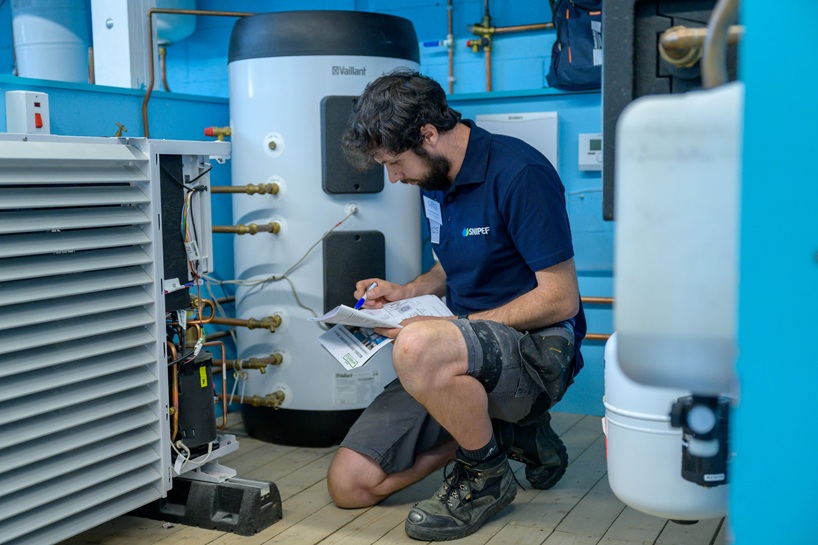Confidence falls among plumbing and heating businesses as costs surge and workloads decline

Confidence across the plumbing and heating profession is sliding, as new figures reveal shrinking order books, rising costs and deepening workforce shortages, mirroring pressures across the wider construction sector.
The Q2 2025 State of Trade report from the Plumbing and Heating Federation (SNIPEF) marks the first clear shift from stability to decline since the survey series began. The report’s outlook for the profession is now rated Stable to Weak.
While many businesses remain operationally steady, confidence in the months ahead is weakening. Just 17% of firms expect workloads to improve, while 37% report that their order books have already fallen below expectations.
Profitability is also under strain, with 49% of firms reporting reduced margins. Rising input costs, reported by 96% of respondents, along with continued payment delays and ongoing labour shortages, are adding to the pressure.
“These are not isolated pain points. They are symptoms of deeper, compounding pressures within our profession, but also the wider construction sector,” said Fiona Hodgson, chief executive of SNIPEF.
“Workloads are softening, margins are continuing to come under strain, and employer costs have surged, particularly following the rise in employer contributions in April. Firms are struggling to find the people they need, and confidence in the months ahead is weakening.
“If we do not act soon to ease these pressures, we risk hollowing out both the plumbing and heating profession and the workforce needed to deliver on housing, infrastructure and net zero targets.”
This warning follows broader signs of slowdown across the construction industry. The June Construction Purchasing Managers’ Index (PMI) showed UK activity contracting at its fastest pace in six months. Private housebuilding saw the steepest drop, with output still well below pre-2023 levels, reinforcing concerns about future demand and capacity across the built environment.
SNIPEF is also calling on government to forcefully tackle the persistent issue of late or delayed payments within construction, alongside the growing numbers of unresolved disputes, unjustified retention practices and write-offs that are creating cashflow challenges for many SMEs within the sector.
Key findings from the Q2 2025 State of Trade report:
- Order books are weakening: 37% of firms report declining forward workloads
- Profit margins under pressure: 49% report reduced profitability
- Costs continue to rise: 96% say input costs are up, with 30% seeing significant increases
- Skilled labour in short supply: 67% report low availability, only 4% describe it as high
- Apprenticeship recruitment remains low: 68% are unlikely to recruit an apprentice, with more than half of respondents stating they were very unlikely.
- Economic confidence has eroded: Just 13% are confident in the UK economy, compared to 49% expressing pessimism
To address the worsening workforce crisis, the Federation has launched a two-part apprenticeship project to explore the root causes behind low recruitment across the profession. The aim is to identify practical, affordable solutions that help more employers take on and train apprentices, rebuilding the profession’s skills base in the process.
In parallel, SNIPEF is working with wider construction industry partners to support a more coordinated response to the UK’s deep-rooted trade and technical labour shortages.
Fiona Hodgson said: “We fully understand that the economy is sluggish and public finances are under pressure. But government focusing on finding marginal savings within a £1.2 trillion budget does nothing to address the bigger productivity challenge. Adjustments on the edges may change headlines, but they will not deliver the skilled workforce or long-term growth the economy needs.
“What our profession and many others are waiting to hear instead is a clear, targeted commitment to skills investment. That means real support for recruiting and retraining, incentives for employers to upskill younger workers, and confident backing for long-term productivity growth. These are the signals businesses and markets are looking for.
“For too long, workforce development has been treated as an afterthought rather than a foundation. If we want a modern economy that delivers growth, net zero and resilience, that mindset needs to change, and it needs to change now.”

















